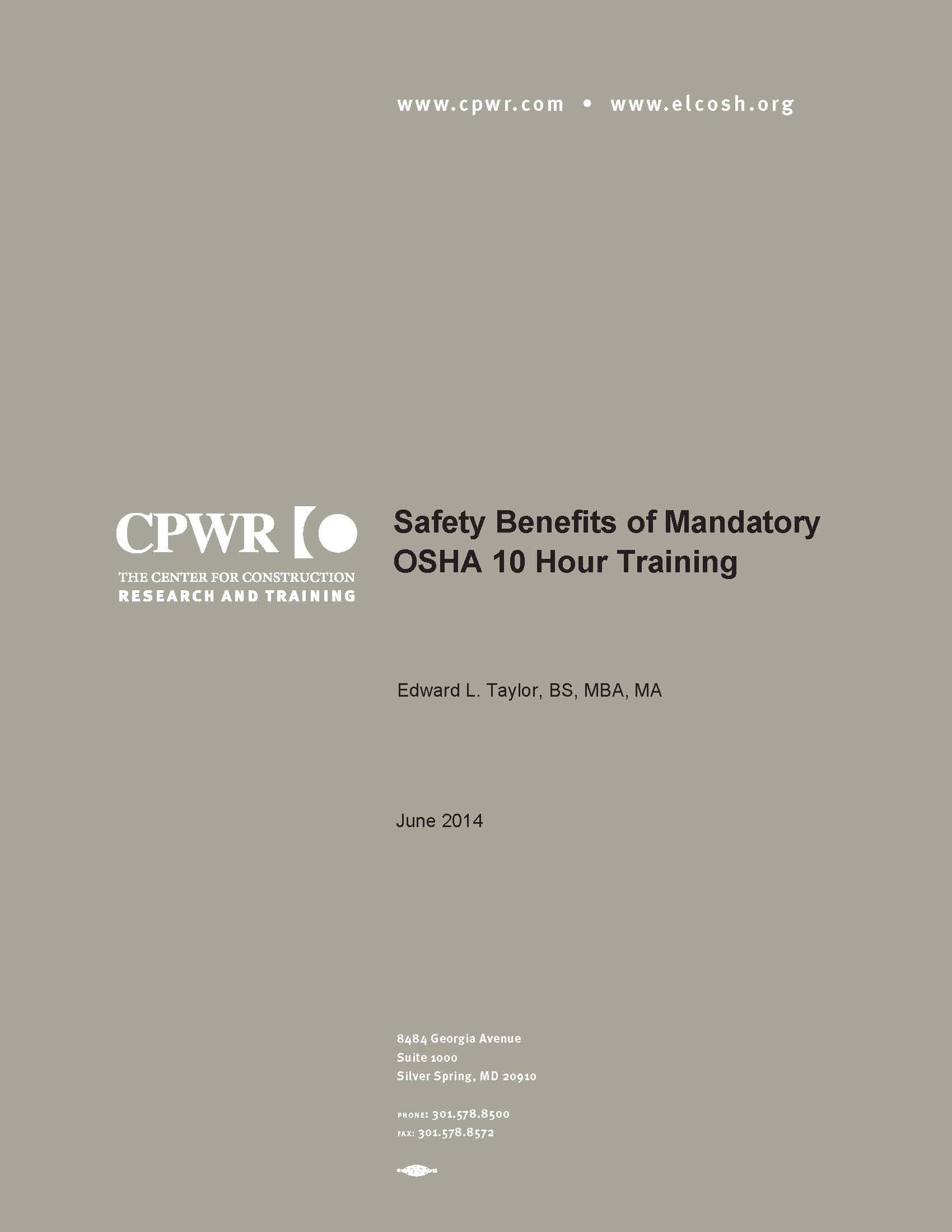Ergonomics
Virtual Boundaries: Investigating the Ethical and Social Risks of Exoskeletons in the Construction Industry
Omobolanle Ogunseiju, Yong Kwon Cho, Mariam Tomori, Likith Rudraraju.
While studies have examined the health and safety risks of exoskeletons in construction, there is a significant gap in the literature regarding their ethical and social risks. Issues related to privacy , design, and discrimination, among many others, are housed in the ethical risks, and social risks often include questions regarding exoskeletons’ affordability, accessibility and impact on social
identity and communication. This study addresses that gap by investigating the ethical and social risks associated with exoskeleton use in construction, assessing their impact on workers’ health and safety and exploring how they can be designed to minimize these risks.
A Developmental Evaluation of CPWR’s Best Built Plans Program to Reduce Injuries from Manual Materials Handling
Dale, A.M., Bunting, J., Barlet, G., Betit, E.. 2024.
This report used a developmental evaluation approach, with real-time data and input from key audiences, to improve the Best Built Plans program and support its goal of increasing the use of safer manual material handling practices.
Identification and Assessment of Musculoskeletal Disorders (MSDs) Risk for Concrete Formwork Systems
John Gambatese and Ziyu Jin. 2021.
This Small Study investigated the differences in work tasks and activities for different types of formwork systems, assessed MSD risks associated with different types of formwork systems, and suggested methods for preventing MSDs among form workers.
Ergonomic Back Injury Risk Factors in Construction Glass and Glazing Work
Terry L. Stentz, Changbum R. Ahn, Kelli R. Herstein, and Zahra Jabbarani Torghabeh. 2019.
Construction glass and glazing (CGG) workers have high rates of work-related musculoskeletal disorders (WRMSDs). For this study, the researchers conducted interviews with CGG workers and worksite observations to identify problems leading to the higher rates of WRMSDs and to gather information about improvements that are needed to lower the risk for injury. CGG job tasks were classified in five categories, and ergonomic task-based estimates were done using the Posture, Activity, Tools, and Handling (PATH) method. The CGG workers’ level of risk of developing musculoskeletal injuries was scaled using the Rapid Entire Body Assessment (REBA) method. The results of this study provided a baseline database for future evaluations of ergonomic interventions to reduce CGG workers’ risk for injury.
The Role of Employee Tenure in Construction Injuries: The Tennessee Case
Edward L. Taylor, John Moore, Thomas Cressler, John Wagner, and Terry Higgins. April 2019.
The inflated risk of injury for new employees in construction and other industries is well documented; however, less is known about the character and timing of those injuries. To fill this knowledge gap, this study analyzed 9,000 workers’ compensation claims from the state of Tennessee having dates of injury in 2014 and 2015 to compare the characteristics of early tenure (i.e., less than or equal to 1 year with an employer) construction injuries with all construction injuries. The analyses examined the proportion of these early tenure injuries in various dimensions including age, employer size, the severity, type and cause of injury, and the body part injured.
Position and Size of Drywall on the Physical Demands for Drywall Installers
Lu Yuan, Sc.D. 2013
This research study validated that workers installing drywall are at a high risk of MSDs, especially to low back and shoulders. Researchers used an integrated biomechanical modeling approach to investigate the effects of position and size of drywall on the physical demands for drywall installers. The results: drywall storage position and size affect the physical demand of the work and may contribute to injury.
Creating the Climate for Making Ergonomic Changes
Boatman, Laura, Debra Chaplan, Suzanne Teran. May 2012
Reducing Sprains and Strains in Construction through Worker Participation: A Manual for Managers and Workers with Examples from Scaffold Erection
Koningsveld, Ernst A.P., Peter Vink, Isle J.M. Urlings, and Annelise M. de Jong. 1998
Describes six steps for setting up a worker-participation program to identify main ergonomic problems, then propose and try solutions; examples are given for scaffold erection, based on a research project in the Netherlands.
The University of Iowa Construction Survey
Cook, Thomas M., John C. Rosecrance and Chris L. Zimmerman. 1996
Examines work-related musculoskeletal disorders among 13 trades in one year: relative frequency on nine body sites, possible causes, and whether doctor visits or missed work resulted.
Work-Related Musculoskeletal Disorders: A Construction Bibliography
Second Edition. 1994
Covers mainly the biomedical, industrial hygiene, and ergonomics literature available from online and CD-ROM bibliographic data bases. The report was prepared in October 1994 by the Department of Preventative Medicine and Environmental Health, College of Medicine, University of Iowa.







